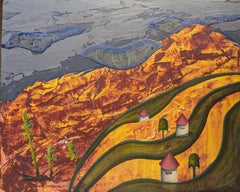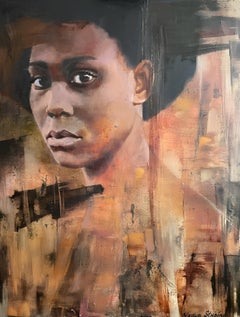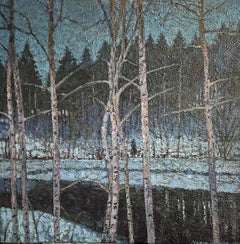Norway - Art
2010s Contemporary Norway - Art
Paper, Watercolor
2010s Abstract Norway - Art
Acrylic
2010s Surrealist Norway - Art
Oil
2010s Contemporary Norway - Art
Canvas, Oil, Acrylic
2010s Impressionist Norway - Art
Canvas, Oil, Acrylic
2010s Impressionist Norway - Art
Canvas, Oil, Acrylic
2010s Post-Impressionist Norway - Art
Canvas, Oil
2010s Contemporary Norway - Art
Canvas, Acrylic
2010s Abstract Norway - Art
Canvas, Oil, Acrylic
2010s Impressionist Norway - Art
Paper, Gouache
2010s Impressionist Norway - Art
Oil, Acrylic
2010s Impressionist Norway - Art
Canvas, Oil
2010s Impressionist Norway - Art
Canvas, Oil, Acrylic
2010s Contemporary Norway - Art
Paper, Acrylic
2010s Abstract Norway - Art
Canvas, Acrylic
2010s Contemporary Norway - Art
Canvas, Acrylic
2010s Abstract Norway - Art
Canvas, Oil, Acrylic
2010s Contemporary Norway - Art
Canvas, Oil, Acrylic
2010s Impressionist Norway - Art
Wood, Gouache
2010s Contemporary Norway - Art
Oil, Acrylic
2010s Impressionist Norway - Art
Paper, Watercolor
2010s Contemporary Norway - Art
Canvas, Oil
2010s Contemporary Norway - Art
Canvas, Acrylic
2010s Impressionist Norway - Art
Oil
2010s Realist Norway - Art
Paper, Watercolor
2010s Abstract Norway - Art
Canvas, Acrylic
2010s Fauvist Norway - Art
Wood, Oil
2010s Impressionist Norway - Art
Canvas, Oil
2010s Surrealist Norway - Art
Canvas, Oil
2010s Realist Norway - Art
Oil, Acrylic
2010s Post-Impressionist Norway - Art
Paper, Oil, Acrylic
2010s Surrealist Norway - Art
Watercolor
2010s Post-Impressionist Norway - Art
Paper, Gouache
2010s Abstract Norway - Art
Canvas, Oil, Acrylic
2010s Abstract Norway - Art
Canvas, Oil, Acrylic
2010s Post-Impressionist Norway - Art
Paper, Gouache
2010s Contemporary Norway - Art
Canvas, Oil
2010s Contemporary Norway - Art
Canvas, Acrylic
2010s Contemporary Norway - Art
Canvas, Acrylic
2010s Realist Norway - Art
Canvas, Oil
2010s Impressionist Norway - Art
Paper, Gouache
2010s Impressionist Norway - Art
Paper, Gouache
2010s Other Art Style Norway - Art
Wood, Oil
2010s Norway - Art
Wood, Oil
2010s Art Deco Norway - Art
Canvas, Oil
2010s Post-Impressionist Norway - Art
Canvas, Oil
2010s Post-Impressionist Norway - Art
Oil, Bamboo Paper
2010s Futurist Norway - Art
Paper, Watercolor
2010s Post-Impressionist Norway - Art
Canvas, Oil
2010s Post-Impressionist Norway - Art
Wood, Oil
2010s Other Art Style Norway - Art
Paper, Ink, Acrylic
2010s Norway - Art
Paper, Oil
2010s Modern Norway - Art
Oil
2010s Romantic Norway - Art
Canvas, Oil Pastel, Acrylic
2010s Realist Norway - Art
Paper, Oil
2010s Contemporary Norway - Art
Oil, Canvas
2010s Post-Impressionist Norway - Art
Canvas, Oil
2010s Post-Impressionist Norway - Art
Oil, Acrylic, Board
2010s Post-Modern Norway - Art
Canvas, Oil, Acrylic
2010s Post-Modern Norway - Art
Canvas, Ink, Acrylic





